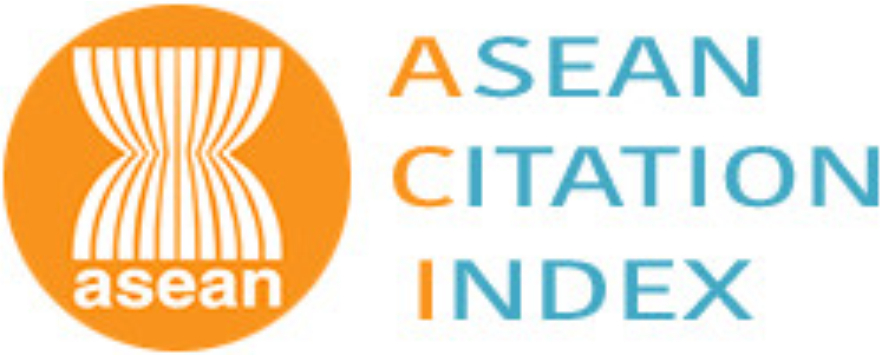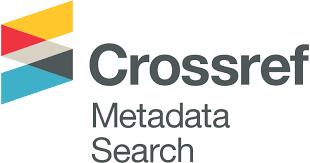Nghiên cứu xây dựng mô hình mạng nơ-ron tích hợp thông tin vật lý hiệu quả cho bài toán thanh chịu kéo thuần túy
Email:
buithiloan@utc.edu.vn
Từ khóa:
Mạng nơ-ron thông tin vật lý, PINN, cơ học vật rắn, thanh chịu kéo thuần túy
Tóm tắt
Trong cơ học kết cấu, việc giải các phương trình vi phân đạo hàm riêng (PDEs) thường được thực hiện bằng các phương pháp số như phương pháp phần tử hữu hạn (FEM). Tuy nhiên, khi áp dụng cho các bài toán liên quan đến tối ưu hóa, FEM thường gặp hạn chế do chi phí tính toán cao và khó khăn trong xử lý hình học thay đổi liên tục. Gần đây, mạng nơ-ron thông tin vật lý (PINN) đã nổi lên như một phương pháp thay thế hiệu quả, cho phép giải PDEs mà không cần chia lưới phần tử, bằng cách tích hợp trực tiếp các định luật vật lý vào hàm mất mát của mô hình học sâu. Nghiên cứu này bước đầu xây dựng mô hình PINN cho bài toán thanh chịu kéo thuần túy, nhằm đánh giá hiệu quả của ba kỹ thuật huấn luyện phổ biến như đưa bài toán về dạng không thứ nguyên; sử dụng điều kiện biên cứng hoặc mềm; lựa chọn giữa hàm mất mát dạng PDE hoặc dạng năng lượng. Kết quả cho thấy việc đưa về dạng không thứ nguyên giúp cân bằng gradient và cải thiện độ chính xác; điều kiện biên cứng dẫn đến hội tụ nhanh và ổn định hơn; và hàm mất mát dạng PDE kiểm soát ràng buộc vật lý tốt hơn hàm năng lượng. Đây mới chỉ là nghiên cứu bước đầu trên một bài toán đơn giản, song các kết quả đạt được đã khẳng định tiềm năng của PINN trong cơ học kết cấu, đồng thời tạo nền tảng để phát triển và mở rộng cho các bài toán phức tạp hơnTài liệu tham khảo
[1]. Lê Cảnh Hưng, Lê Bá Anh, Bùi Thị Loan, Trần Bảo Việt, Phương pháp đồng nhất hóa kết hợp định hướng dữ liệu dự báo hệ số dẫn hữu hiệu dọc trục của vật liệu composite dẫn nhiệt thấp, Tạp Chí Khoa Học Giao Thông Vận Tải, 74 (2023) 934–45.
[2]. B.A. Le , H.Q. Nguyen, B.V.Tran, T.S.Vu, T.L.Bui , Symbolic regression model for predicting compression strength of steel fiber-reinforced concrete, Transportation Research Procedia, 85 (2025) 94–101.
[3]. H.Q. Nguyen , B.A. Le, B.V.Tran, T.S.Vu, T.L.Bui, Deep artificial neural network-powered phase field model for predicting damage characteristic in brittle composite under varying configurations, Machine Learning: Science and Technology, 5 (2024) 025062.
[4]. G.E.Karniadakis , I.G.Kevrekidis , L.Lu , P.Perdikaris, S.Wang, L.Yang, Physics-informed achine learning, Nature Reviews Physics, 3 (2021) 422–40.
[5]. M.Raissi , P.Perdikaris, G.E.Karniadakis, Physics-informed neural networks: A deep learning framework for solving forward and inverse problems involving nonlinear partial differential equations, Journal of Computational Physics, 378 (2019) 686–707.
[6].T.Botarelli, M.Fanfani, P.Nesi, L.Pinelli, Using Physics-Informed neural networks for solving Navier-Stokes equations in fluid dynamic complex scenarios, Engineering Applications of Artificial Intelligence, 148 (2025) 110347.
[7].S. Cai, Z. Mao, Z. Wang, M. Yin, G. E. Karniadakis, Physics-informed neural networks (PINNs) for fluid mechanics: a review, Acta Mech Sin, 37(2021) 1727–38. https://doi.org/10.1007/s10409-021-01148-1.
[8].J. C. Michel, H. Moulinec, P. Suquet, A computational scheme for linear and non‐linear composites with arbitrary phase contrast, Numerical Meth Engineering, 52 (2001) 139–60.
[9].S. Cai, Z. Wang, S. Wang, P. Perdikaris, Physics-informed neural networks for heat transfer problems, Journal of Heat Transfer, 143 (2021) 060801.
[10]. J. Xu ,H. Wei, H. Bao, Physics-informed neural networks for studying heat transfer in porous media, International Journal of Heat and Mass Transfer, 217 (2023) 124671.
[11]. D.Jalili, S.Jang, M.Jadidi, G.Giustini, A.Keshmiri, Y.Mahmoudi, Physics-informed neural networks for heat transfer prediction in two-phase flows, International Journal of Heat and Mass Transfer, 221 (2024) 125089.
[12]. Y.Chi, M.Li, R.Long, Z.Liu, W.Liu, Heat source field inversion and detection based on physics-informed deep learning, International Communications in Heat and Mass Transfer, 164 (2025) 108824.
[13]. V.Kag, V.Gopinath, Physics-informed neural network for modeling dynamic linear elasticity, Computer Science, 2023.
[14]. A.D. Mouratidou, G.A. Drosopoulos, G.E. Stavroulakis, Ensemble of physics-informed neural networks for solving plane elasticity problems with examples, Acta Mech, 235 (2024) 6703–22. https://doi.org/10.1007/s00707-024-04053-3.
[15]. A.Chakraborty, C.Anitescu, S.Goswami, X.Zhuang, T.Rabczuk, Variational energy based XPINNs for phase field analysis in brittle fracture,Computer Science - Computational Engineering, (2022). https://doi.org/10.48550/arXiv.2207.02307.
[16]. M.Manav, R.Molinaro, S.Mishra, L.De Lorenzis, Phase-field modeling of fracture with physics-informed deep learning, Computer Methods in Applied Mechanics and Engineering, 429 (2024) 117104.
[17]. A. Al-Safwan, C.Song, Is it time to swish? Comparing activation functions in solving the Helmholtz equation using physics-informed neural networks, (2021). https://doi.org/10.48550/arXiv.2110.07721.
[18]. M.Abadi, P.Barham, J.Chen, Z.Chen, A.Davis, J.Dean, TensorFlow: A System for Large-Scale Machine Learning, Proceedings of the 12th USENIX Symposium on Operating Systems Design and Implementation (OSDI ’16), 2016, p. 265–83.
[19]. E.Haghighat, M.Raissi, A.Moure, H.Gomez, R.Juanes, A physics-informed deep learning framework for inversion and surrogate modeling in solid mechanics, Computer Methods in Applied Mechanics and Engineering, 379 (2021) 113741.
[20]. X.Ren , X.Lyu, Mixed form based physics-informed neural networks for performance evaluation of two-phase random materials, Engineering Applications of Artificial Intelligence, 127 (2024)107250.
[21]. I.E. Lagaris, A.Likas, D.I.Fotiadis, Artificial neural networks for solving ordinary and partial differential equations, IEEE Transactions on Neural Networks, 9 (1998) 987–1000.
[22]. M.Raissi, Deep hidden physics models: Deep learning of nonlinear partial differential equations, Journal of Machine Learning Research, 19 (2018) 1–24.
[23]. L.Lu, X.Meng, Z.Mao , E,.George, DeepXDE K, A deep learning library for solving differential equations, 2020.
[2]. B.A. Le , H.Q. Nguyen, B.V.Tran, T.S.Vu, T.L.Bui , Symbolic regression model for predicting compression strength of steel fiber-reinforced concrete, Transportation Research Procedia, 85 (2025) 94–101.
[3]. H.Q. Nguyen , B.A. Le, B.V.Tran, T.S.Vu, T.L.Bui, Deep artificial neural network-powered phase field model for predicting damage characteristic in brittle composite under varying configurations, Machine Learning: Science and Technology, 5 (2024) 025062.
[4]. G.E.Karniadakis , I.G.Kevrekidis , L.Lu , P.Perdikaris, S.Wang, L.Yang, Physics-informed achine learning, Nature Reviews Physics, 3 (2021) 422–40.
[5]. M.Raissi , P.Perdikaris, G.E.Karniadakis, Physics-informed neural networks: A deep learning framework for solving forward and inverse problems involving nonlinear partial differential equations, Journal of Computational Physics, 378 (2019) 686–707.
[6].T.Botarelli, M.Fanfani, P.Nesi, L.Pinelli, Using Physics-Informed neural networks for solving Navier-Stokes equations in fluid dynamic complex scenarios, Engineering Applications of Artificial Intelligence, 148 (2025) 110347.
[7].S. Cai, Z. Mao, Z. Wang, M. Yin, G. E. Karniadakis, Physics-informed neural networks (PINNs) for fluid mechanics: a review, Acta Mech Sin, 37(2021) 1727–38. https://doi.org/10.1007/s10409-021-01148-1.
[8].J. C. Michel, H. Moulinec, P. Suquet, A computational scheme for linear and non‐linear composites with arbitrary phase contrast, Numerical Meth Engineering, 52 (2001) 139–60.
[9].S. Cai, Z. Wang, S. Wang, P. Perdikaris, Physics-informed neural networks for heat transfer problems, Journal of Heat Transfer, 143 (2021) 060801.
[10]. J. Xu ,H. Wei, H. Bao, Physics-informed neural networks for studying heat transfer in porous media, International Journal of Heat and Mass Transfer, 217 (2023) 124671.
[11]. D.Jalili, S.Jang, M.Jadidi, G.Giustini, A.Keshmiri, Y.Mahmoudi, Physics-informed neural networks for heat transfer prediction in two-phase flows, International Journal of Heat and Mass Transfer, 221 (2024) 125089.
[12]. Y.Chi, M.Li, R.Long, Z.Liu, W.Liu, Heat source field inversion and detection based on physics-informed deep learning, International Communications in Heat and Mass Transfer, 164 (2025) 108824.
[13]. V.Kag, V.Gopinath, Physics-informed neural network for modeling dynamic linear elasticity, Computer Science, 2023.
[14]. A.D. Mouratidou, G.A. Drosopoulos, G.E. Stavroulakis, Ensemble of physics-informed neural networks for solving plane elasticity problems with examples, Acta Mech, 235 (2024) 6703–22. https://doi.org/10.1007/s00707-024-04053-3.
[15]. A.Chakraborty, C.Anitescu, S.Goswami, X.Zhuang, T.Rabczuk, Variational energy based XPINNs for phase field analysis in brittle fracture,Computer Science - Computational Engineering, (2022). https://doi.org/10.48550/arXiv.2207.02307.
[16]. M.Manav, R.Molinaro, S.Mishra, L.De Lorenzis, Phase-field modeling of fracture with physics-informed deep learning, Computer Methods in Applied Mechanics and Engineering, 429 (2024) 117104.
[17]. A. Al-Safwan, C.Song, Is it time to swish? Comparing activation functions in solving the Helmholtz equation using physics-informed neural networks, (2021). https://doi.org/10.48550/arXiv.2110.07721.
[18]. M.Abadi, P.Barham, J.Chen, Z.Chen, A.Davis, J.Dean, TensorFlow: A System for Large-Scale Machine Learning, Proceedings of the 12th USENIX Symposium on Operating Systems Design and Implementation (OSDI ’16), 2016, p. 265–83.
[19]. E.Haghighat, M.Raissi, A.Moure, H.Gomez, R.Juanes, A physics-informed deep learning framework for inversion and surrogate modeling in solid mechanics, Computer Methods in Applied Mechanics and Engineering, 379 (2021) 113741.
[20]. X.Ren , X.Lyu, Mixed form based physics-informed neural networks for performance evaluation of two-phase random materials, Engineering Applications of Artificial Intelligence, 127 (2024)107250.
[21]. I.E. Lagaris, A.Likas, D.I.Fotiadis, Artificial neural networks for solving ordinary and partial differential equations, IEEE Transactions on Neural Networks, 9 (1998) 987–1000.
[22]. M.Raissi, Deep hidden physics models: Deep learning of nonlinear partial differential equations, Journal of Machine Learning Research, 19 (2018) 1–24.
[23]. L.Lu, X.Meng, Z.Mao , E,.George, DeepXDE K, A deep learning library for solving differential equations, 2020.
Tải xuống
Chưa có dữ liệu thống kê

Nhận bài
14/07/2025
Nhận bài sửa
29/08/2025
Chấp nhận đăng
11/10/2025
Xuất bản
15/10/2025
Chuyên mục
Công trình khoa học
Kiểu trích dẫn
Bùi Thị, L., Trần Bảo, V., Nguyễn Hoàng, Q., Phạm Thị Thanh, T., & Bùi Thị Thanh, M. (1760461200). Nghiên cứu xây dựng mô hình mạng nơ-ron tích hợp thông tin vật lý hiệu quả cho bài toán thanh chịu kéo thuần túy. Tạp Chí Khoa Học Giao Thông Vận Tải, 76(8), 1108-1122. https://doi.org/10.47869/tcsj.76.8.6









